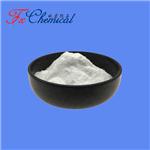- Miltefosine
-

- $0.00 / 1KG
-
2024-11-02
- CAS:58066-85-6
- Min. Order: 1KG
- Purity: 98%min
- Supply Ability: 30tons/month
- Miltefosine
-

- $47.00 / 50mg
-
2024-10-31
- CAS:58066-85-6
- Min. Order:
- Purity: 99.51%
- Supply Ability: 10g
- Miltefosine
-

- $47.00 / 50mg
-
2024-10-31
- CAS:58066-85-6
- Min. Order:
- Purity: 99.51%
- Supply Ability: 10g
|
| | Miltefosine Basic information |
| | Miltefosine Chemical Properties |
| Melting point | 232-234° (dec) | | storage temp. | room temp | | solubility | H2O: soluble10mg/mL, clear, colorless | | form | Crystalline solid | | color | White to Almost white | | InChI | InChI=1S/C21H46NO4P/c1-5-6-7-8-9-10-11-12-13-14-15-16-17-18-20-25-27(23,24)26-21-19-22(2,3)4/h5-21H2,1-4H3 | | InChIKey | PQLXHQMOHUQAKB-UHFFFAOYSA-N | | SMILES | O(CCCCCCCCCCCCCCCC)P([O-])(=O)OCC[N+](C)(C)C | | CAS DataBase Reference | 58066-85-6(CAS DataBase Reference) |
| Hazard Codes | Xn | | Risk Statements | 22-43 | | Safety Statements | 36/37 | | RIDADR | UN 2811 6.1 / PGIII | | WGK Germany | 3 | | RTECS | KH2890000 | | HS Code | 29239000 | | Toxicity | LD50 in rats (mg/kg): 246 orally (Muschiol) |
| | Miltefosine Usage And Synthesis |
| Description | Miltefosin, representing the prototype of a new phospholipid structure, was introduced
for the palliative treatment of skin metastases in patients with breast cancer. It is highly
active against the human leukemia tumor cells xenograft in nude mice, leading to growth
inhibition and regression of large established tumors. Its mode of antitumor activity is not
mediated by the host immune system but by its pharmacological effects at the level of the
cancer cell membrane, distinctly different from that of the classical cytostatic drugs which
interact with cell proliferation at the level of DNA replication. Protein kinase C inhibition has
been suggested as a possible mechanism. | | Originator | Asta Medica (Germany) | | Uses | A phospholipid drug with antineoplastic and antiprotozoal/antifungal properties, also acts as an Akt inhibitor, and under investigation as a potential therapy against HIV infection. | | Definition | ChEBI: A phospholipid that is the hexadecyl monoester of phosphocholine. | | Brand name | Miltex | | Antimicrobial activity | Concentrations of 1–5 μm inhibit the promastigotes and amastigotes
of Leishmania spp. and the epimastigotes and amastigotes
of T. cruzi. Inhibitory concentrations against T. brucei spp.
and E. histolytica are closer to 50 μm. Acanthamoeba spp. are variably
susceptible, depending on the experimental conditions. | | Acquired resistance | There are no reports of clinical resistance in Leishmania
so far. Experimental resistance has been induced in vitro
against the promastigote stage of Leishmania and two
plasma membrane proteins, LdMT and Ld Ros3, are necessary
for miltefosine uptake. There is evidence that reduced
sensitivity of promastigotes is passed on to intracellular
amastigotes. | | Pharmaceutical Applications | An alkylphospholipid, originally investigated as an anticancer
compound, formulated for oral administration. | | Biochem/physiol Actions | Inhibitor of protein kinase C and of phosphatidylcholine synthesis. Used for the treatment of visceral and cutaneous leishmaniasis. Active against metronidazole-resistant and -susceptible strains of Trichomonas vaginalis | | Pharmacokinetics | In rodent models the drug is almost completely absorbed after
oral administration. About 90% is bound to plasma proteins. It
is widely distributed in the body; studies in rats showed highest
uptake in kidney, liver and spleen. In rats and dogs bioavailability
was 82% and 94%, with maximum values reached after 4–48 h.
In adult human trials repeated oral dosing with 100 mg per
day achieved a peak plasma concentration of 70 mg/L after
8–24 h (day 23). The half-life is 6–8 days. | | Clinical Use | Visceral leishmaniasis
Cutaneous leishmaniasis | | Side effects | Mild to moderate gastrointestinal side effects are reported
in 40–60% of patients. Moderate to severe nephrotoxicity
was seen in 2% and 1% of patients, respectively; increases
in creatinine
levels were reversible. Miltefosine is contraindicated
in pregnancy, based on findings of teratogenicity in
rats. It causes hemolysis and cannot be given intravenously. | | storage | -20°C |
| | Miltefosine Preparation Products And Raw materials |
|